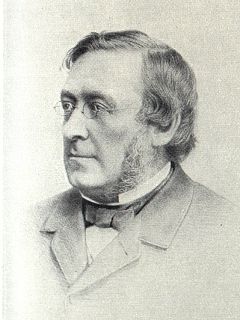
The Dean Cemetery is a historically important Victorian cemetery north of the Dean Village, west of Edinburgh city centre, in Scotland. It lies between Queensferry Road and the Water of Leith, bounded on its east side by Dean Path and on its west by the Dean Gallery. A 20th-century extension lies detached from the main cemetery to the north of Ravelston Terrace. The main cemetery is accessible through the main gate on its east side, through a "grace and favour" access door from the grounds of Dean Gallery and from Ravelston Terrace. The modern extension is only accessible at the junction of Dean Path and Queensferry Road.

David Stevenson MICE FRSE FRSSA was a Scottish lighthouse designer, who designed over 30 lighthouses in and around Scotland, and helped continue the dynasty of lighthouse engineering founded by his father.

The Royal Society of Edinburgh is Scotland's national academy of science and letters. It is a registered charity, operating on a wholly independent and non-party-political basis and providing public benefit throughout Scotland. It was established in 1783. As of 2017, it has more than 1,660 Fellows.

The Royal Meteorological Society is a long-established institution that promotes academic and public engagement in weather and climate science. Fellows of the Society must possess relevant qualifications, but Associate Fellows can be lay enthusiasts. Its Quarterly Journal is one of the world's leading sources of original research in the atmospheric sciences.
The Royal Scottish Society of Arts is a learned society in Scotland, dedicated to the study of science and technology. It was founded as The Society for the Encouragement of the Useful Arts in Scotland by Sir David Brewster in 1821 and dedicated to "the promotion of invention and enterprise". The Society was granted a Royal Charter in 1841.

Sir Thomas Henry Holland was a British geologist who worked in India with the Geological Survey of India, serving as its director from 1903 to 1910. He later worked as an educational administrator at Edinburgh University.

The Medical Society of London is one of the oldest surviving medical societies in the United Kingdom.
William James Russell (1830–1909) was an English chemist and Fellow of the Royal Society.







